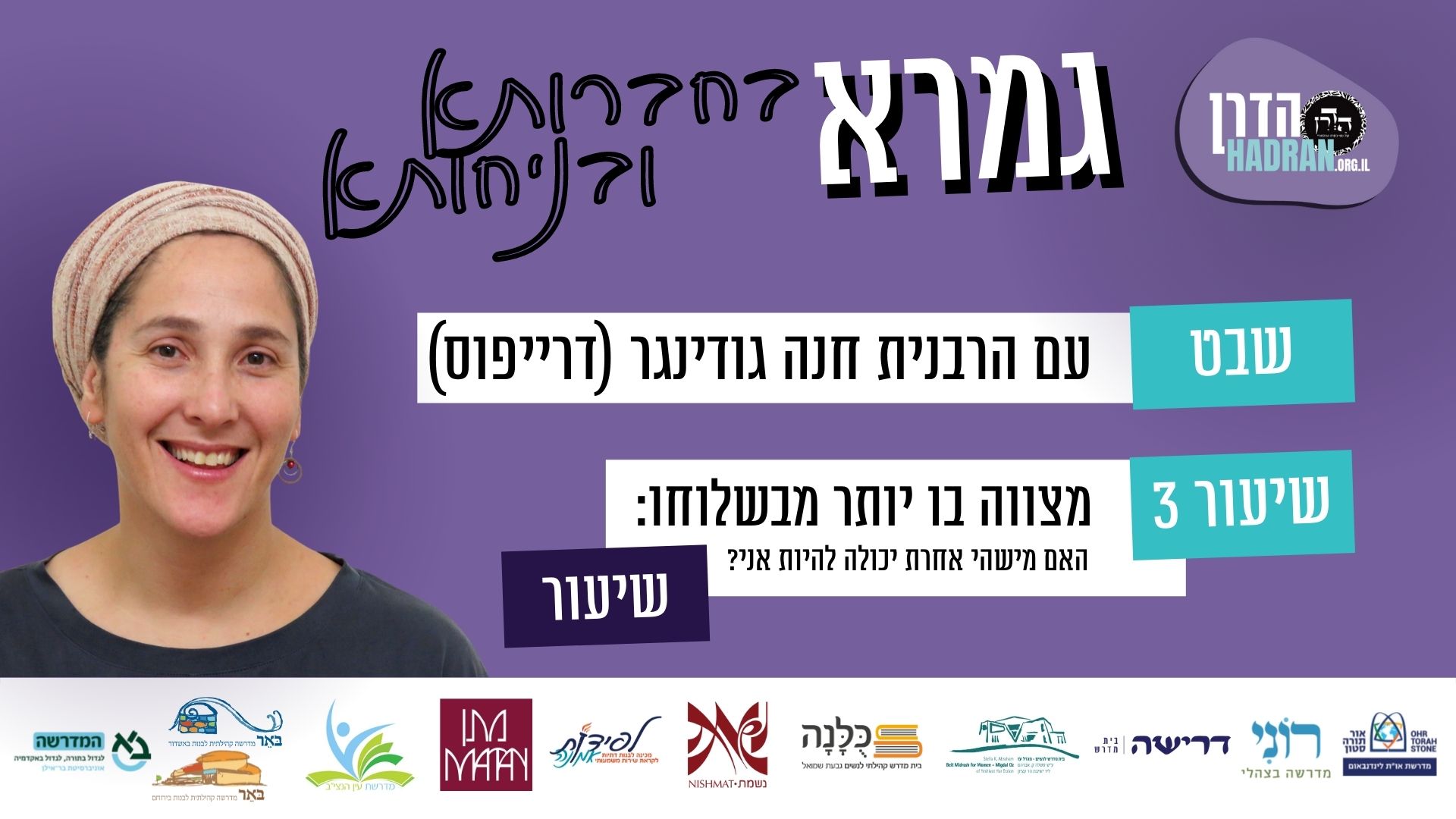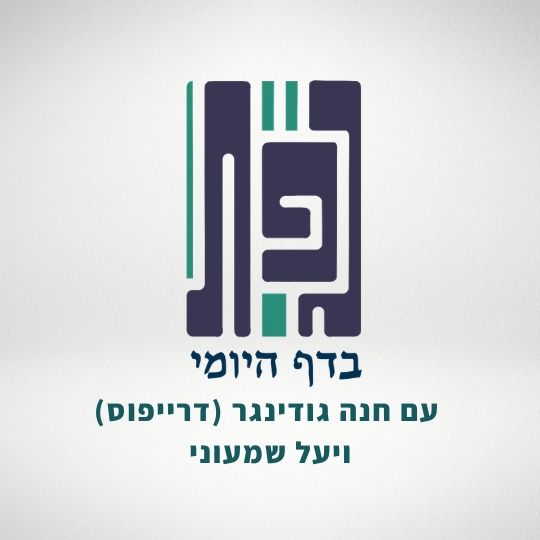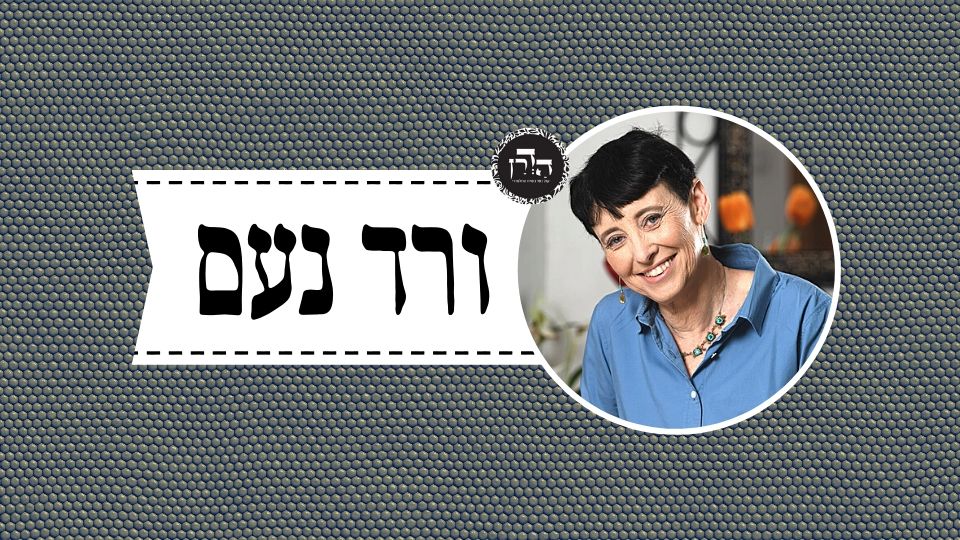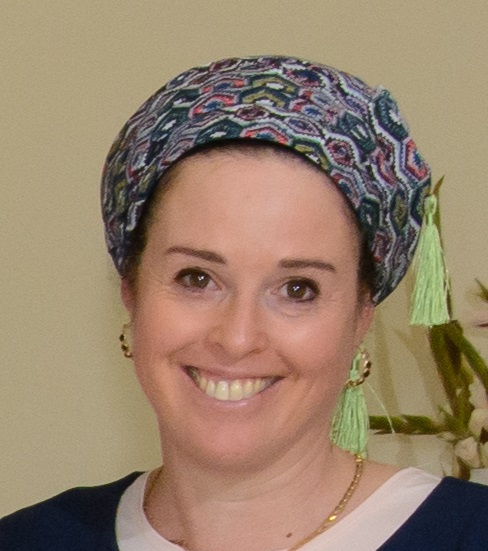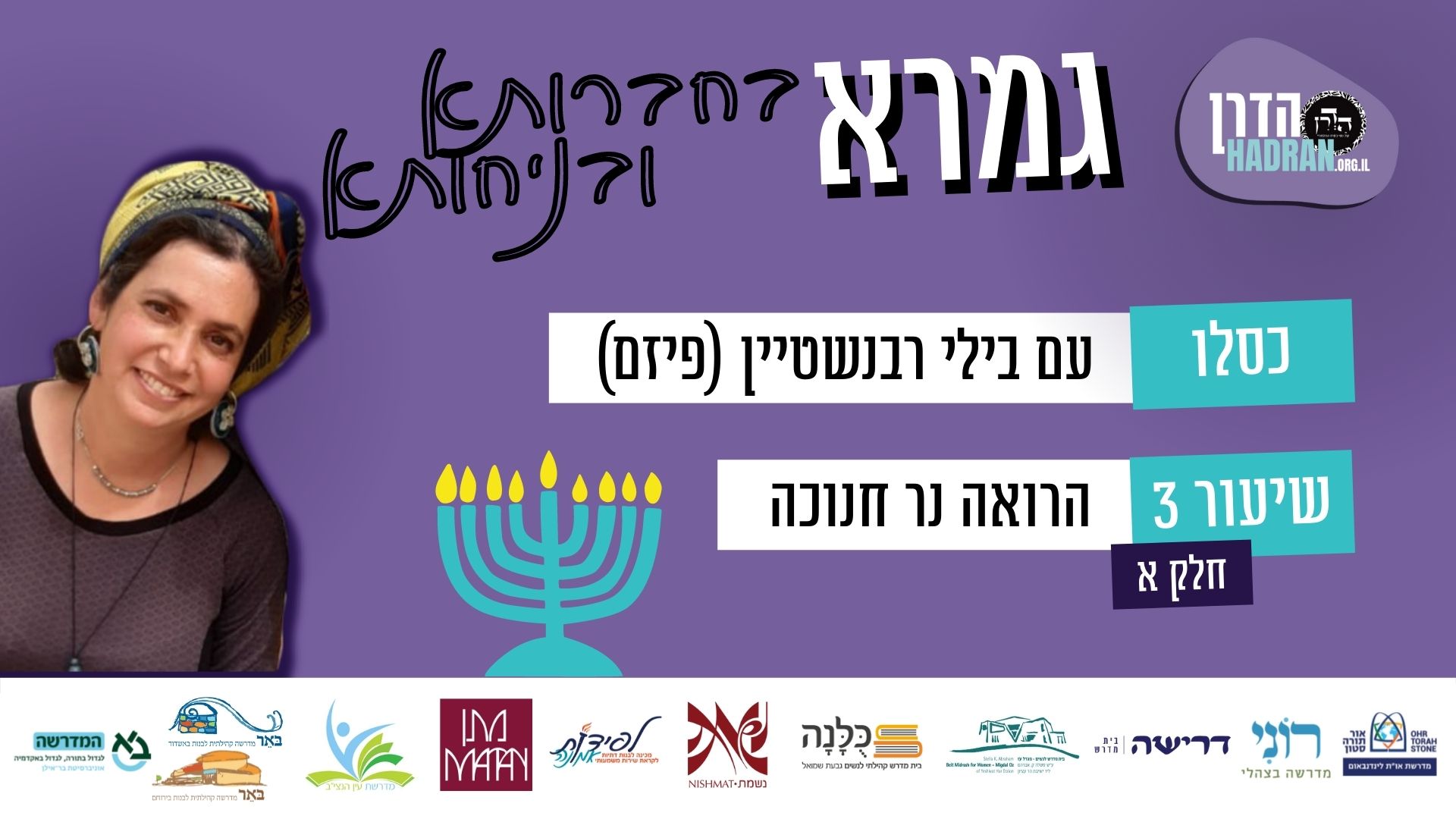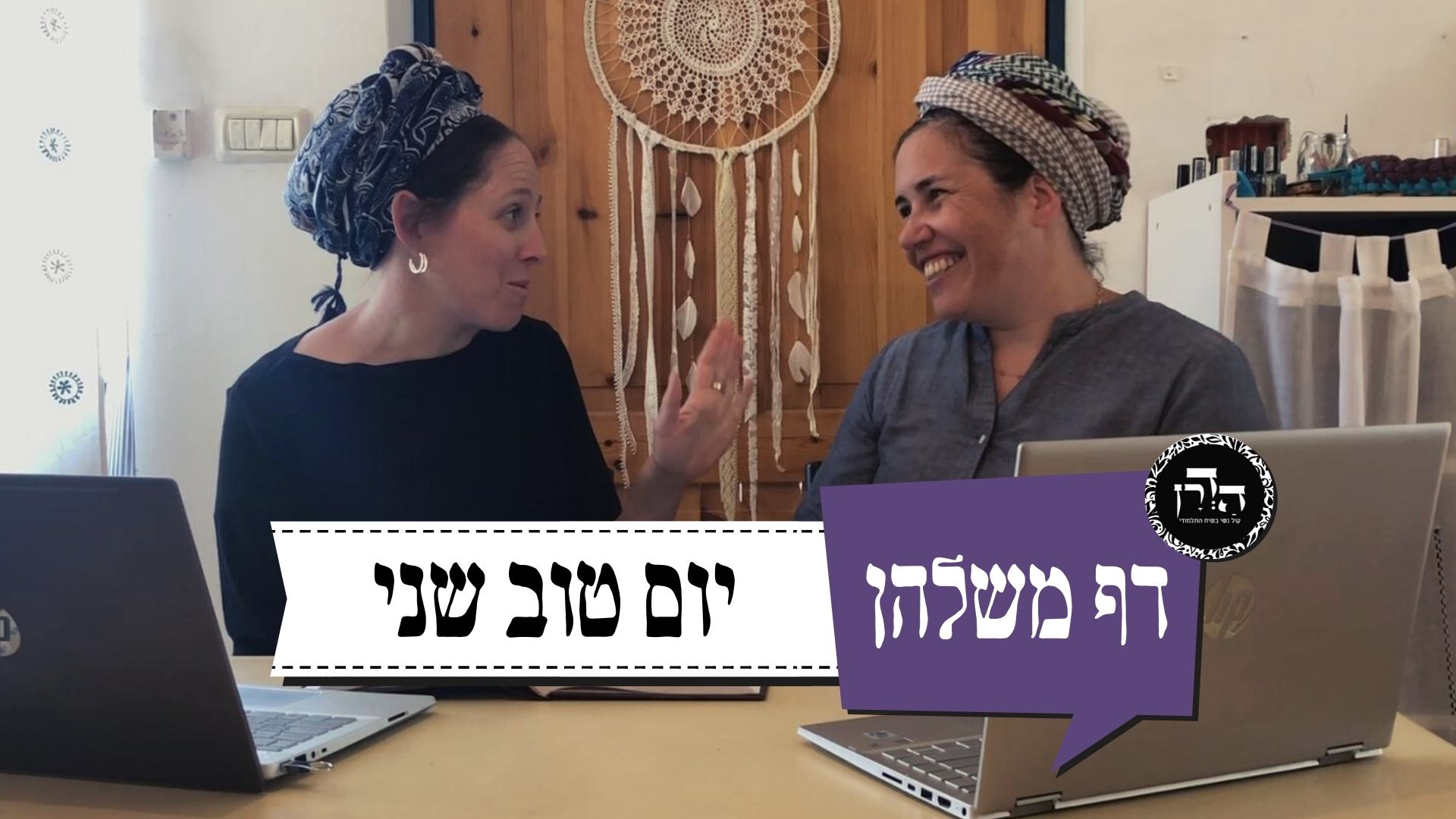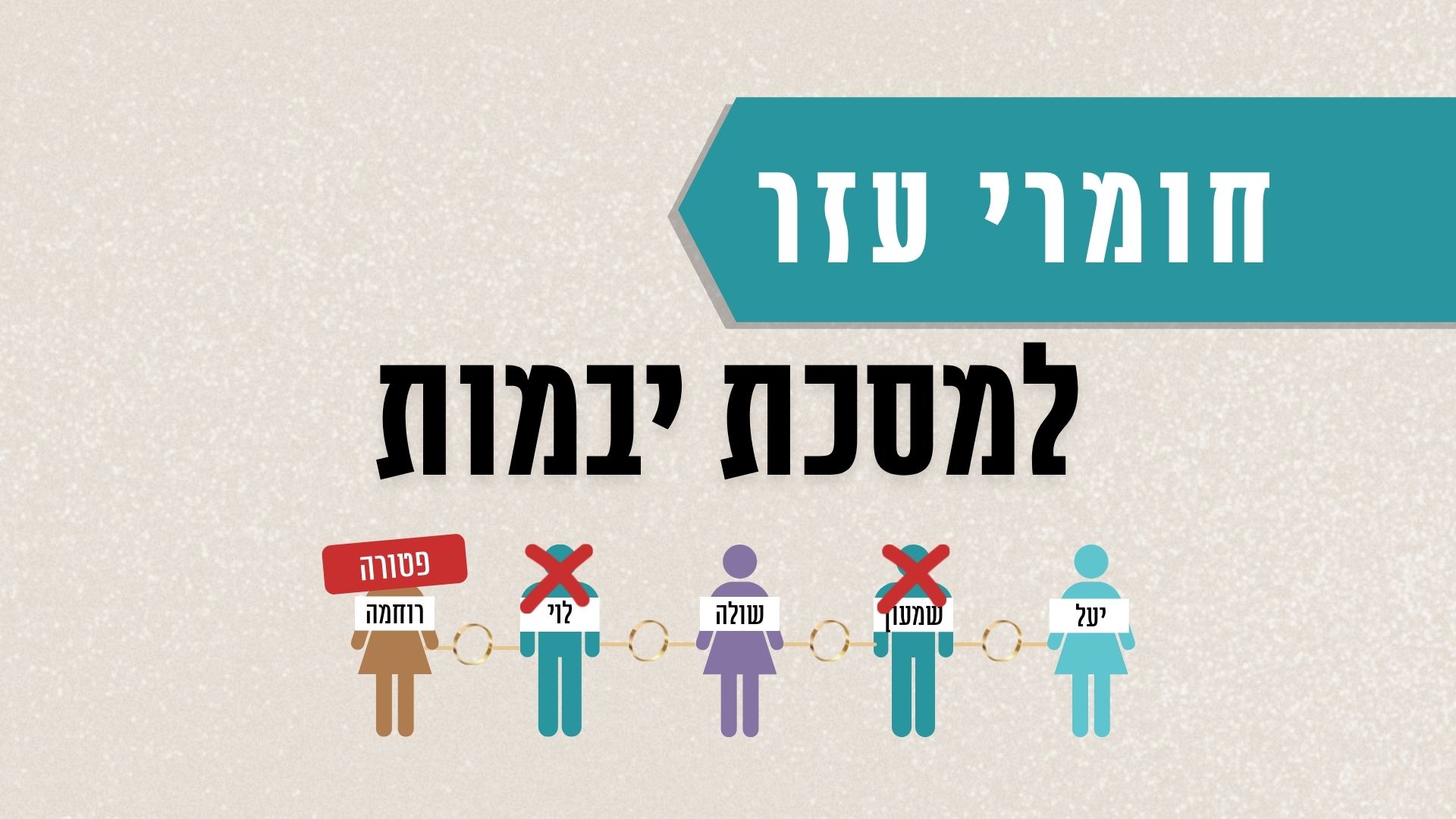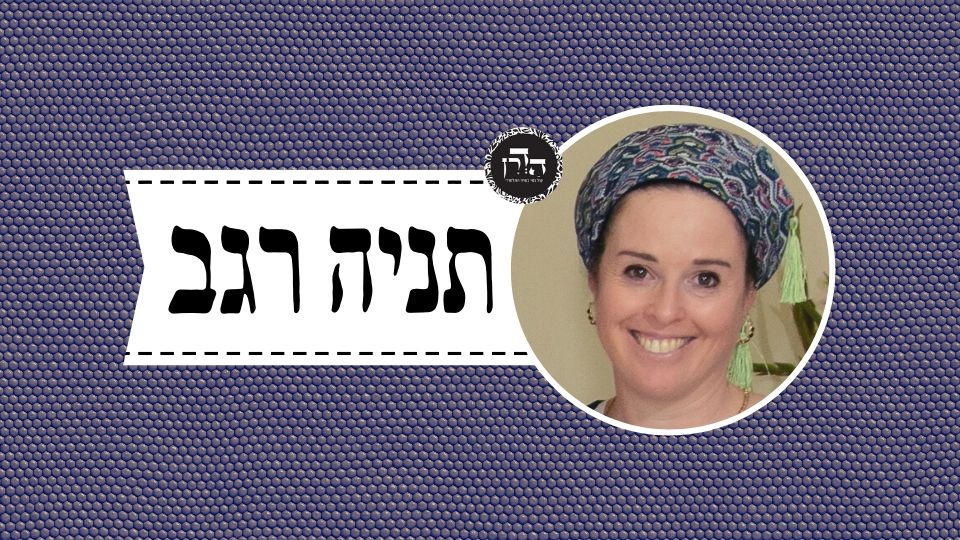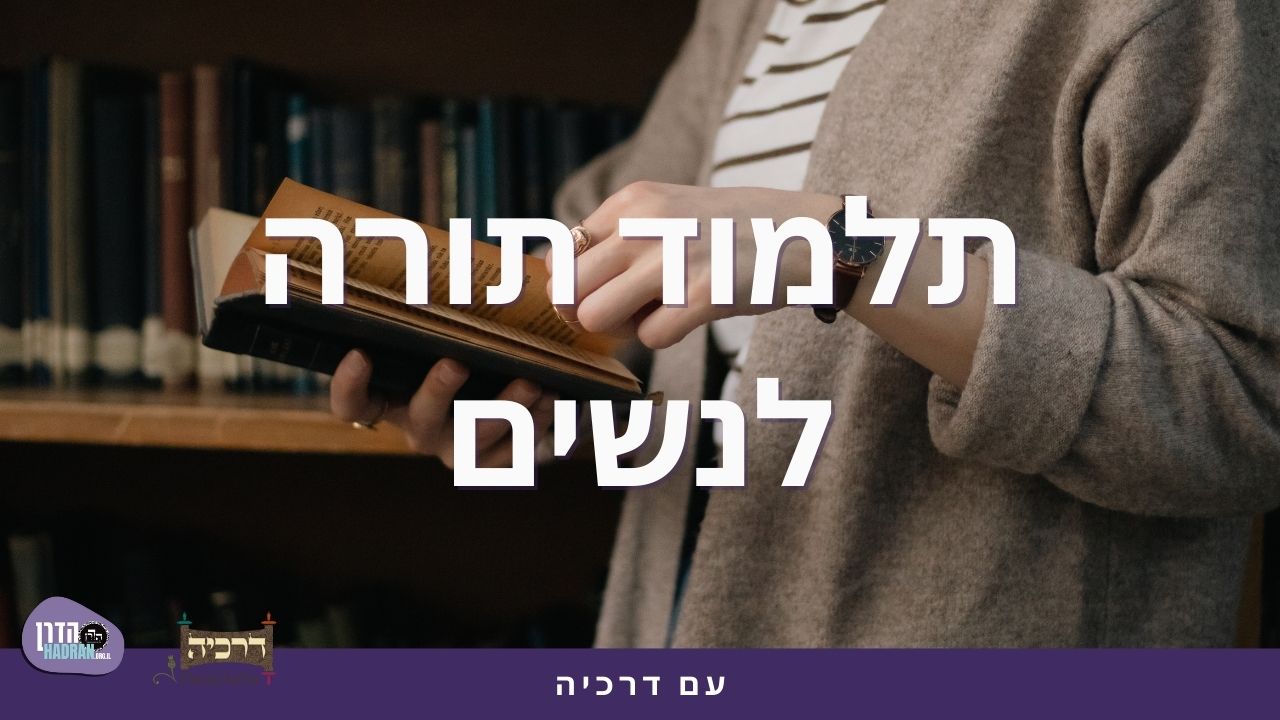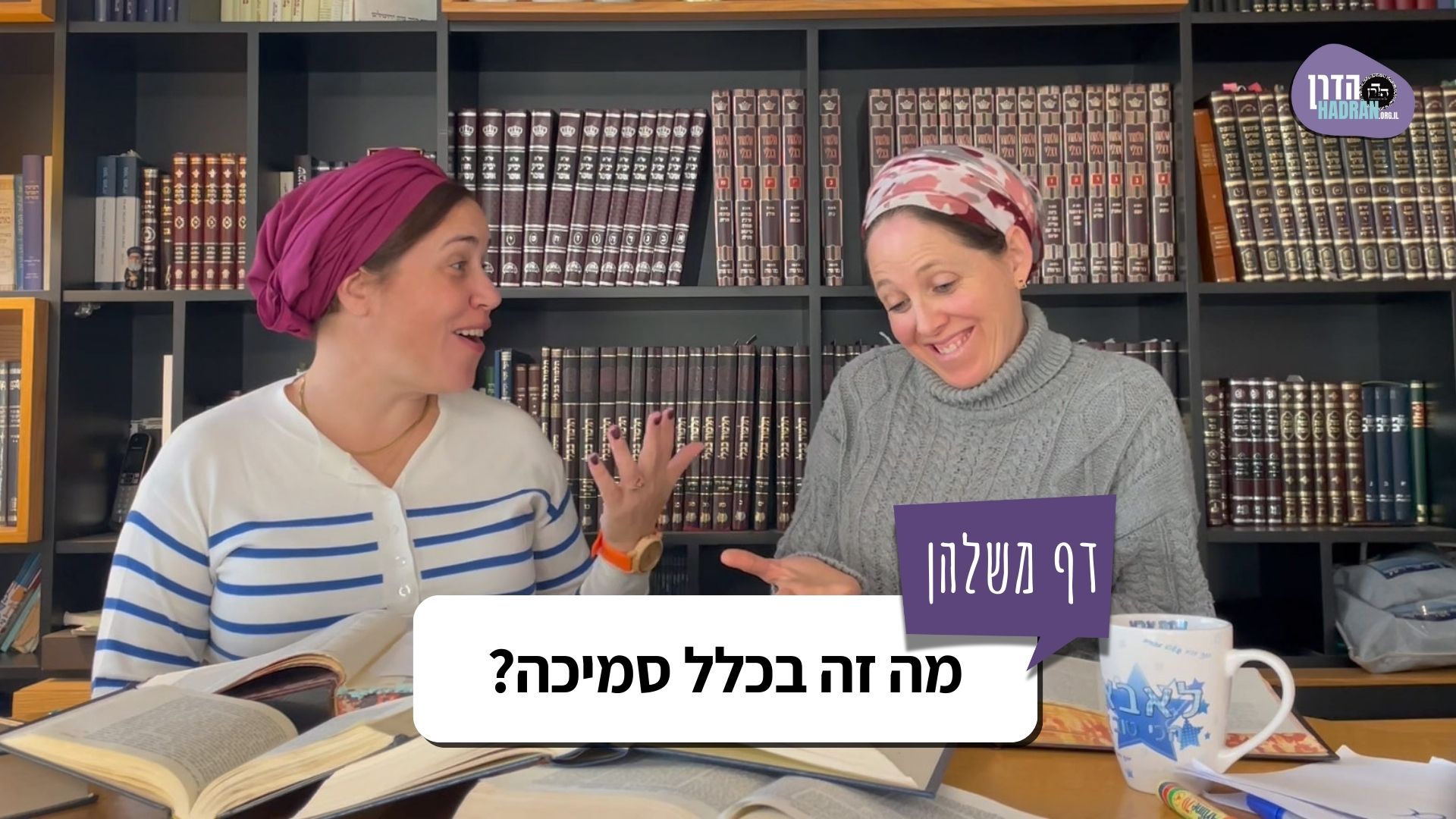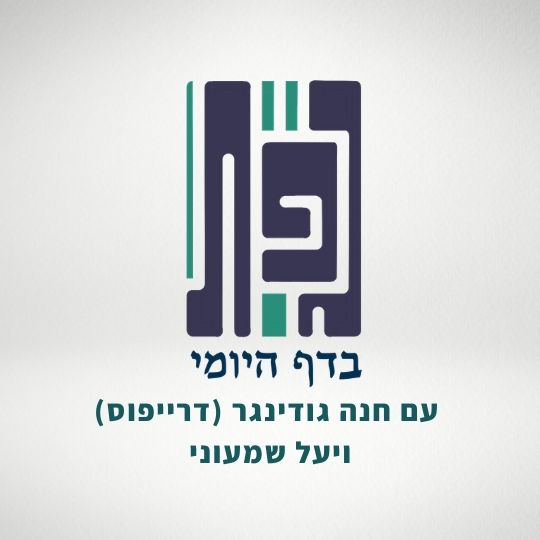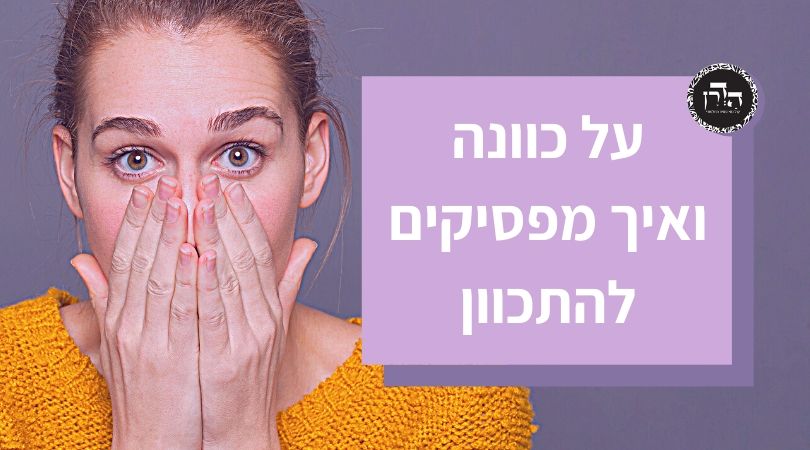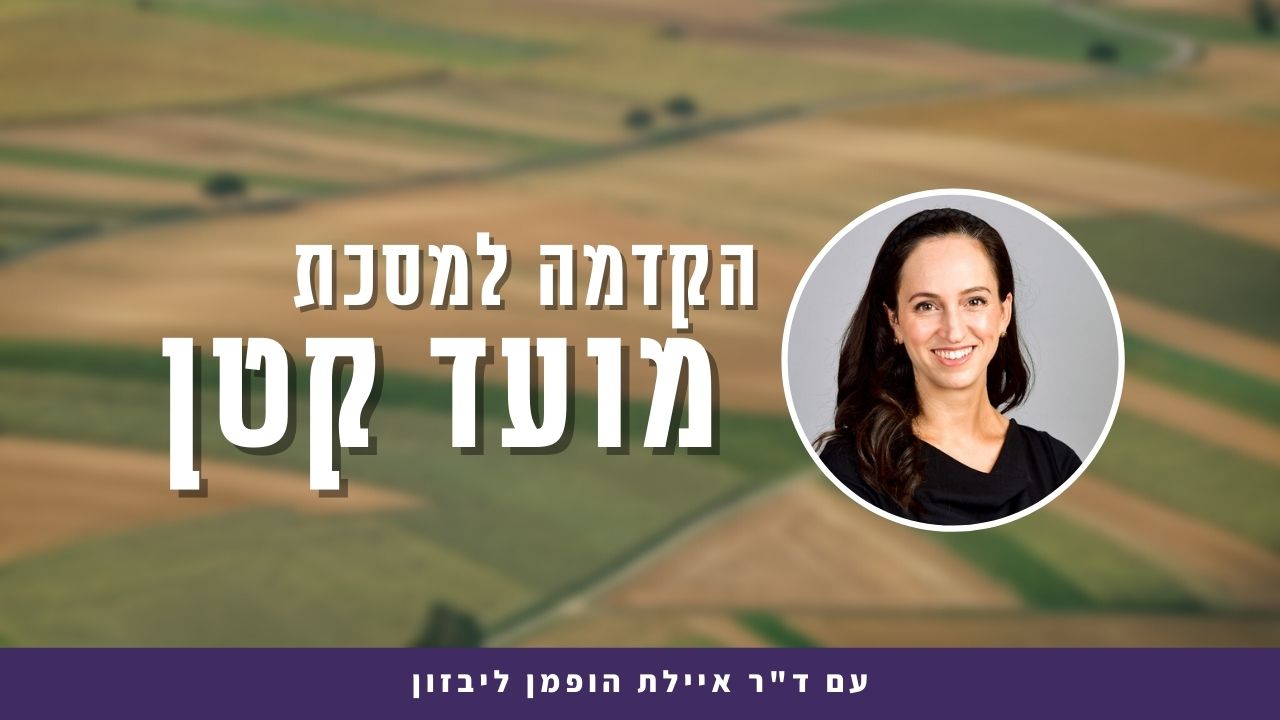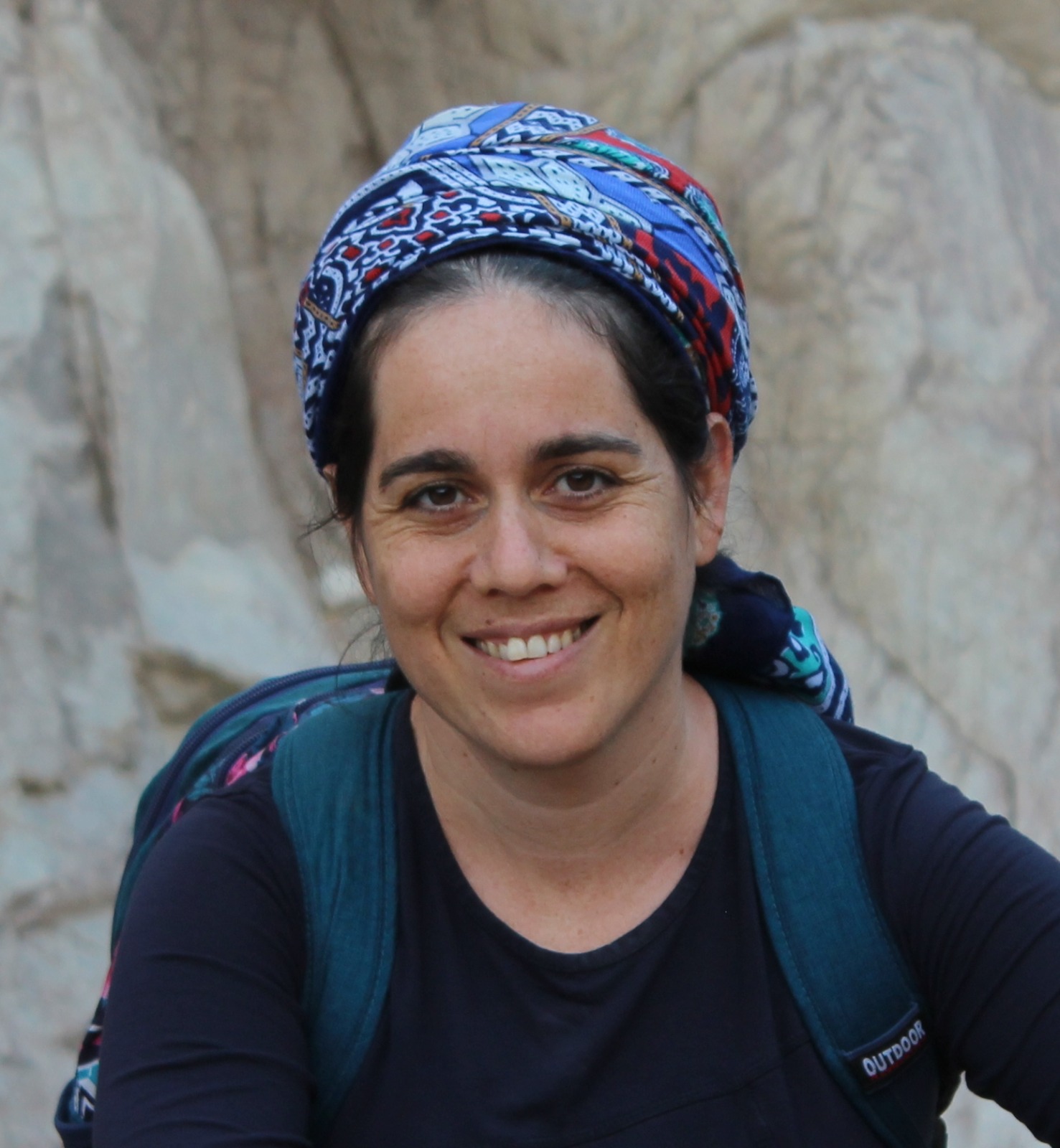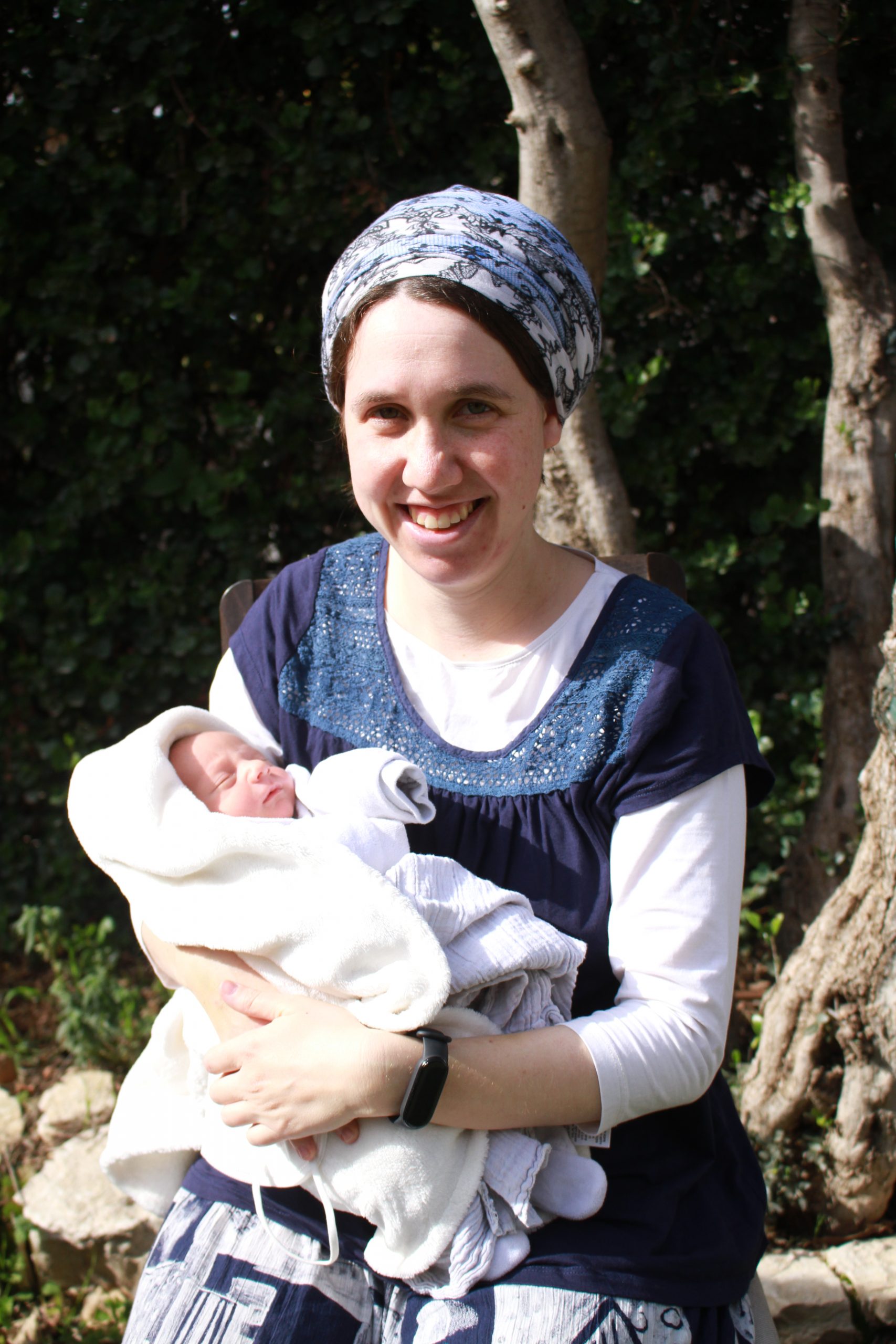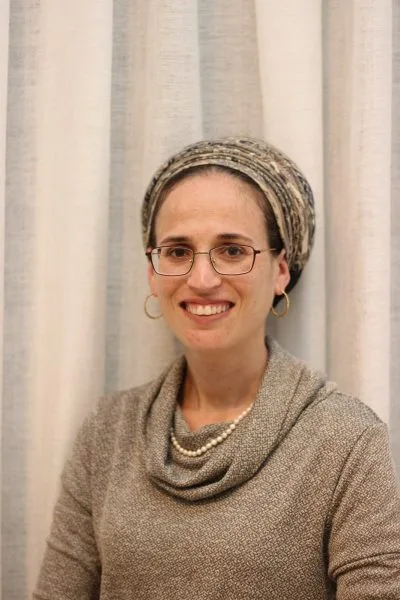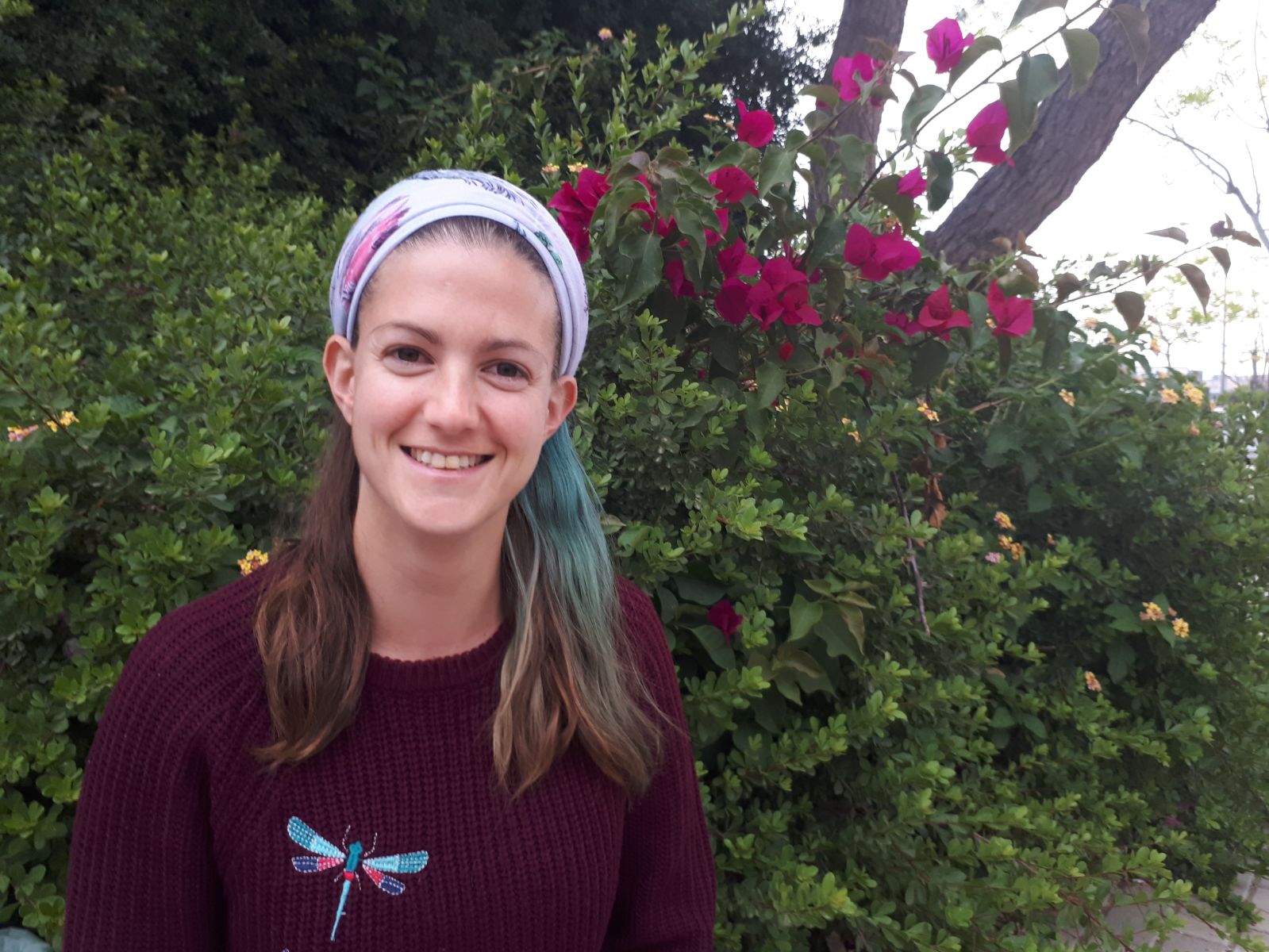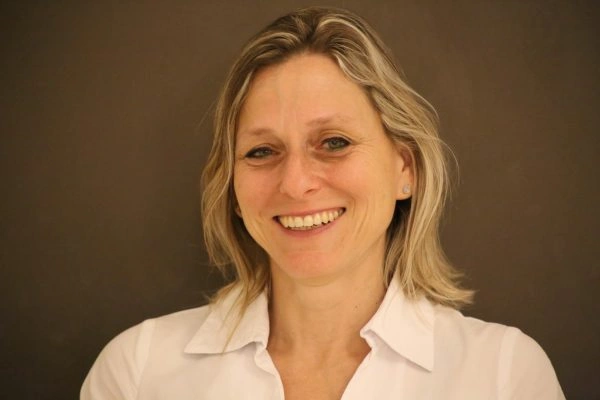איזה דברים חייב תלמיד חכם ללמוד? טבח צריך לבדוק את הסימנים לאחר השחיטה. אם יש ספק לאחר השחיטה שהבהמה היתה טריפה, הבשר בחזקת היתר. הגמרא עורכת השוואה למקרה של ספק סכנה ששם מחמירים.
הלימוד השבוע מוקדש ע”י רוברט ופאולה כהן לע”נ יוסף בן משה הכהן ז”ל. יוסף היה חזן שאהב מאוד לשיר, עבד קשה בחייו והיה מאוד מסור למשפחתו ולקהילה.
רוצה להקדיש שיעור?

כלים
הלימוד השבוע מוקדש ע”י רוברט ופאולה כהן לע”נ יוסף בן משה הכהן ז”ל. יוסף היה חזן שאהב מאוד לשיר, עבד קשה בחייו והיה מאוד מסור למשפחתו ולקהילה.
כלים
העמקה
רוצה להבין מה באמת קורה מתחת לפני השטח של הסוגיה?
שיעורים, פודקאסטים והרחבות של מיטב המורות שלנו יפתחו לך עוד זוויות וכיווני חשיבה.
חדשה בלימוד הגמרא?
זה הדף הראשון שלך? איזו התרגשות עצומה! יש לנו בדיוק את התכנים והכלים שיעזרו לך לעשות את הצעדים הראשונים ללמידה בקצב וברמה שלך, כך תוכלי להרגיש בנוח גם בתוך הסוגיות המורכבות ומאתגרות.
פסיפס הלומדות שלנו
גלי את קהילת הלומדות שלנו, מגוון נשים, רקעים וסיפורים. כולן חלק מתנועה ומסע מרגש ועוצמתי.
חולין ט
מעילאי נמי קרמא איכא איידי דממשמשא ידא דטבחא מפתת
from above too there is a membrane that should prevent the forbidden fat from flowing onto the piece of meat even if the forbidden fat is placed directly upon it. The Gemara explains: Since the hand of the slaughterer touches the upper membrane, that membrane disintegrates and the forbidden fat flows onto the meat.
ואמר רב יהודה אמר רב תלמיד חכם צריך שילמוד ג’ דברים כתב שחיטה ומילה ורב חנניא בר שלמיא משמיה דרב אמר אף קשר של תפילין וברכת חתנים וציצית ואידך הני שכיחן
§ And Rav Yehuda says that Rav says: A Torah scholar is required to learn the requisite skills to perform three matters: Writing, so that he will be able to write texts on various occasions, ritual slaughter, and circumcision. And Rav Ḥananya bar Shelamya says in the name of Rav: He must also learn to tie the knot of the phylacteries, and to recite the blessing of the grooms by heart and with the traditional intonation, and to tie ritual fringes to the corners of a garment. The Gemara notes: And the other amora, Rav Yehuda, holds that those skills are commonplace and do not require special training.
ואמר רב יהודה אמר שמואל כל טבח שאינו יודע הלכות שחיטה אסור לאכול משחיטתו ואלו הן הלכות שחיטה שהייה דרסה חלדה הגרמה ועיקור
§ And Rav Yehuda says that Shmuel says: With regard to any slaughterer who does not know the halakhot of ritual slaughter, it is prohibited to eat from his slaughter. And these are the halakhot of ritual slaughter: Interrupting the slaughter, pressing the knife, concealing the knife under the windpipe or the gullet in the course of an inverted slaughter, diverting the knife from the place of slaughter, and ripping the simanim from their place before cutting them.
מאי קמ”ל כולהו תנינהו לא צריכא ששחט לפנינו ב’ וג’ פעמים ושחט שפיר מהו דתימא מדאידך שחט שפיר האי נמי שחט שפיר קמ”ל כיון דלא גמר זימנין דשהי ודריס ולא ידע
The Gemara asks: What is the novelty in what Rav is teaching us? We learned all of them in the mishnayot in the second chapter of this tractate, and therefore it is obvious that a slaughterer who does not know these halakhot is not qualified. The Gemara answers: No, it is necessary in a case where the slaughterer slaughtered before us twice or three times and slaughtered well. Lest you say: From the fact that he slaughtered the other animals well, this animal he also slaughtered well; therefore, Rav teaches us: Since he did not learn the halakhot, sometimes it happens that he interrupts the slaughter or presses the knife, and he does not know that he invalidated the slaughter.
ואמר רב יהודה אמר שמואל הטבח צריך שיבדוק בסימנים לאחר שחיטה אמר רב יוסף אף אנן נמי תנינא ר”ש אומר אם שהה כדי ביקור מאי לאו כדי ביקור סימנין
§ And Rav Yehuda says that Shmuel says: The slaughterer must examine the simanim, the windpipe and the gullet, after completing the slaughter. Rav Yosef said: We learn in a mishna (32a) as well: Rabbi Shimon says: The slaughter is not valid if he interrupted the slaughter for an interval equivalent to the duration of an examination. What, is it not an interval equivalent to the duration of an examination of the simanim? Apparently, one is obligated to examine the simanim.
א”ל אביי לא הכי א”ר יוחנן כדי ביקור חכם א”כ נתת דבריך לשיעורים אלא כדי ביקור טבח חכם
Abaye said to him: No, this is what Rabbi Yoḥanan says: It is an interval equivalent to the duration of an examination of the knife, as the Sages instituted that one must take the knife to be examined by a Torah scholar prior to slaughtering the animal. Rav Yosef said to him: If so, you have rendered your statement subject to circumstances, as sometimes the Torah scholar is near and sometimes the Torah scholar is far, and the time required for examination varies accordingly. Rather, it is an interval equivalent to the duration of an examination performed by a slaughterer who is a Torah scholar. In that case, the travel time is not factored, just the time of the examination, which does not vary.
לא בדק מאי ר’ אליעזר בן אנטיגנוס משום רבי אלעזר בר’ ינאי אמר טרפה ואסורה באכילה במתניתא תנא נבלה ומטמאה במשא
The Gemara asks: If the slaughterer did not examine the simanim after completing slaughter of the animal, what is the halakha? Rabbi Eliezer ben Antigonus says in the name of Rabbi Elazar, son of Rabbi Yannai: The halakhic status of the slaughtered animal is that of a tereifa, and it is forbidden for consumption, but it does not impart impurity. It was taught in a baraita: Its halakhic status is that of an unslaughtered carcass, and it imparts impurity by means of carrying it.
במאי קמיפלגי בדרב הונא דאמר בהמה בחייה בחזקת איסור עומדת עד שיודע לך במה נשחטה נשחטה הרי היא בחזקת היתר עד שיודע לך במה נטרפה
The Gemara asks: With regard to what principle do they disagree? The Gemara answers: They disagree with regard to the application of the halakha stated by Rav Huna, who says: An animal during its lifetime exists with the presumptive status of prohibition, as it is prohibited to eat a living animal, and it continues to have this status even after its death until it will become known to you in what manner it was slaughtered, i.e., whether it was properly slaughtered. Once the animal was slaughtered, it exists with the presumptive status of permissibility until it will become known to you in what manner it was rendered a tereifa.
מר סבר בחזקת איסור קיימא והשתא מתה היא ומר סבר בחזקת איסור אמרינן בחזקת טומאה לא אמרינן
It is with regard to the application of this halakha that Rabbi Elazar, son of Rabbi Yannai, and the tanna of the baraita disagree in a case where the slaughterer did not examine the simanim after completing the slaughter. One Sage holds: Since it has not been verified that the animal was slaughtered properly, the animal exists with the presumptive status of prohibition, and since now it is dead, it assumes the status of an unslaughtered carcass and imparts impurity. And one Sage holds: With regard to the presumptive status of prohibition, we say that the animal is forbidden until it is verified that it was slaughtered properly; with regard to the presumptive status of ritual impurity we do not say that the animal is impure, as a living animal is not ritually impure.
גופא אמר רב הונא בהמה בחייה בחזקת איסור עומדת עד שיודע לך במה נשחטה נשחטה בחזקת היתר עומדת עד שיודע לך במה נטרפה ולימא נשחטה הותרה הא קמ”ל דאע”ג דאיתיליד בה ריעותא
§ The Gemara proceeds to analyze the matter itself. Rav Huna says: An animal during its lifetime exists with the presumptive status of prohibition until it will become known to you in what manner it was slaughtered. Once the animal was slaughtered, it exists with the presumptive status of permissibility until it will become known to you in what manner it was rendered a tereifa. The Gemara challenges this: And let us say that once the animal was slaughtered, it became permitted, instead of saying that it exists with the presumptive status of permissibility. The Gemara explains: This teaches us that even if a flaw developed in the animal that raises uncertainty with regard to its permitted status, it retains its presumptive status of permissibility.
כדבעא מיניה רבי אבא מרב הונא בא זאב ונטל בני מעים מהו
As Rabbi Abba raised a dilemma before Rav Huna: If a wolf came and took the innards of a slaughtered animal, what is the halakha?
נטל הא ליתנהו אלא נקב בני מעים מהו נקב הא קא חזינן דהוא נקבינהו אלא נטלן והחזירן כשהן נקובין מהו מי חיישי’ שמא במקום נקב נקב או לא
The Gemara asks: Took? In that case the innards are not there, and therefore there is no way of seeing an indication of a flaw. Rather, the dilemma is: In a case where a wolf perforated the innards of a slaughtered animal, what is the halakha? The Gemara challenges: Perforated? We see that the wolf perforated them and in that case too there is no indication of a flaw. Rather, the dilemma is: In a case where a wolf took the innards and returned them when they are perforated, what is the halakha? Are we concerned that perhaps the wolf perforated the innards in the place of a preexisting perforation and the animal was a tereifa from the outset, or is that possibility not a concern?
א”ל אין חוששין שמא במקום נקב נקב
Rav Huna said to Rabbi Abba: One is not concerned that perhaps the wolf perforated the innards in the place of a preexisting perforation, because one relies on the presumptive status of permissibility.
איתיביה ראה צפור המנקר בתאנה ועכבר המנקר באבטיחים
Rabbi Abba raised an objection to the opinion of Rav Huna: If one saw a bird pecking at a fig or a mouse gnawing at melons,
חוששין שמא במקום נקב נקב
one is concerned that perhaps the bird or the mouse perforated it in the place of the preexisting perforation caused by a snake, and it is prohibited to eat the fig or the melon, due to the danger that the snake might have left its venom.
אמר ליה מי קא מדמית איסורא לסכנתא סכנה שאני א”ל רבא מאי שנא ספק סכנתא לחומרא ספק איסורא נמי לחומרא
Rav Huna said to Rabbi Abba: Are you comparing danger to prohibition? Danger is different, and one rules stringently in cases involving danger. Rava said to him: What is different about the fact that the ruling in cases of uncertainty involving danger is stringent, given that in cases of uncertainty involving prohibition the ruling is also stringent?
א”ל אביי ולא שאני בין איסורא לסכנתא והא אילו ספק טומאה ברה”ר ספיקו טהור ואילו ספק מים מגולין אסורין
Abaye said to Rava: And is there no difference between prohibition and danger? But isn’t it the halakha that in a case of uncertainty involving ritual impurity in the public domain, its uncertain impurity leaves it pure, while in a case of uncertainty involving water that is exposed and therefore susceptible to a snake leaving venom in it, the water is forbidden.
א”ל התם הלכתא גמירי לה מסוטה מה סוטה ברה”י אף טומאה ברה”י
Rava said to Abaye: There, in the case of ritual impurity in the public domain, the Sages learned this halakha through tradition from the case of a sota, a woman who enters into seclusion with a particular man after her husband warns her not to. She is forbidden to her husband even though there is uncertainty whether or not she committed adultery. Just as a sota is forbidden only in a case of uncertainty in the private domain, as there is no seclusion in the public domain; so too with regard to ritual impurity, one becomes ritually impure in a case of uncertainty only in the private domain.
מתיב רב שימי שרץ בפי חולדה וחולדה מהלכת על גבי ככרות של תרומה ספק נגע ספק לא נגע ספיקו טהור ואילו ספק מים מגולין אסורין
Rav Shimi raises an objection to the opinion of Rava from a mishna (Teharot 4:2): If the carcass of a creeping animal was in the mouth of a weasel, and that weasel was walking on loaves of teruma, and there is uncertainty whether the creeping animal touched the loaves and uncertainty whether it did not touch the loaves, its uncertain impurity leaves it pure, while in a case of uncertainty involving water that is exposed and therefore susceptible to a snake leaving venom in it, the water is forbidden.
התם נמי הלכתא גמירי לה מסוטה מה סוטה דבר שיש בה דעת לישאל אף הכא נמי דבר שיש בו דעת לישאל
The Gemara answers: There too, the halakha is derived from the case of a sota. Just as the uncertainty in the case of sota involves an entity that has consciousness in order for her to be asked whether she was unfaithful and is forbidden to her husband, so too here, only uncertainty involving an entity that has consciousness in order for it to be asked whether the loaves were rendered impure would become impure. The weasel does not have that consciousness.
אמר רב אשי ת”ש צלוחית שהניחה מגולה ובא ומצאה מכוסה טמאה שאני אומר אדם טמא נכנס לשם וכיסה
Rav Ashi said: Come and hear additional proof that danger is more severe than prohibition (see mishna Para 11:1): In the case of a flask of purification water that one left exposed and he came back and found it covered, it is ritually impure, as I say: An impure man entered into there and covered it, and in the course of doing so he rendered the vessel and its contents impure.
הניחה מכוסה ובא ומצאה מגולה אם יכולה חולדה לשתות ממנה או נחש לדברי רבן גמליאל או שירד בה טל בלילה פסולה
In a case where one left the vessel covered and came back and found it exposed, if it is in a place where a weasel could drink from it, or a snake according to the statement of Rabban Gamliel, or if there is concern that dew fell into it at night, the purification waters are disqualified for sprinkling in the process of purification of a person impure with impurity imparted by a corpse, due to the concern that the saliva of the weasel or the dew, which are unfit for sprinkling, intermingled with it. Nevertheless, the water is not impure.
ואמר רבי יהושע בן לוי מה טעם
And Rabbi Yehoshua ben Levi says: What is the reason that there is no concern that a ritually impure person exposed the waters and rendered them impure?
